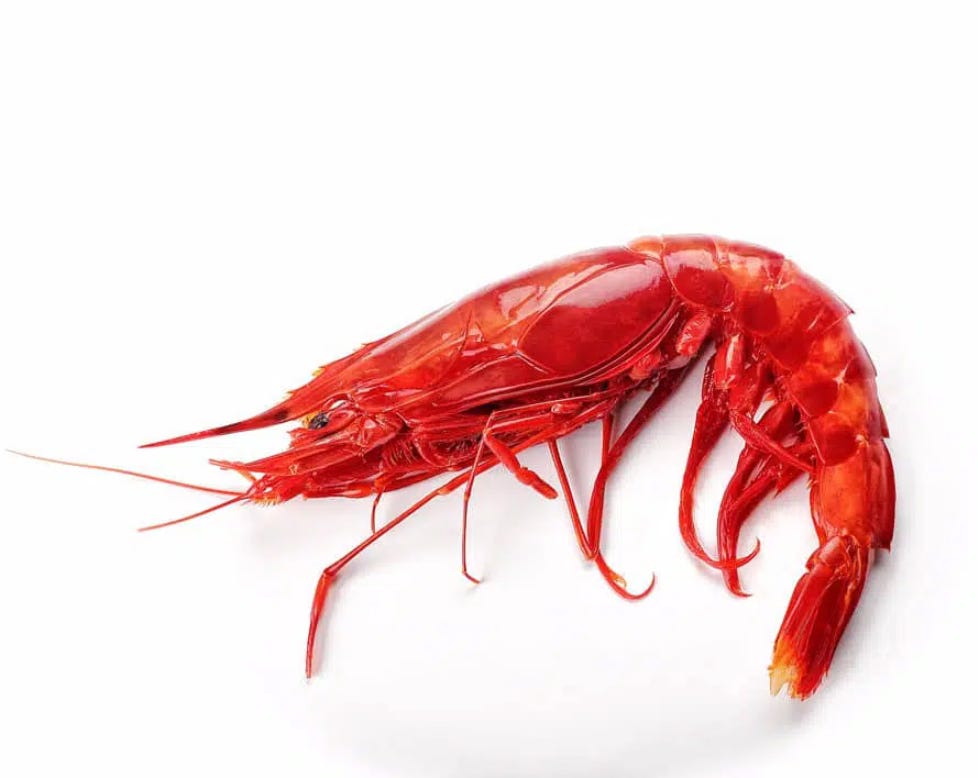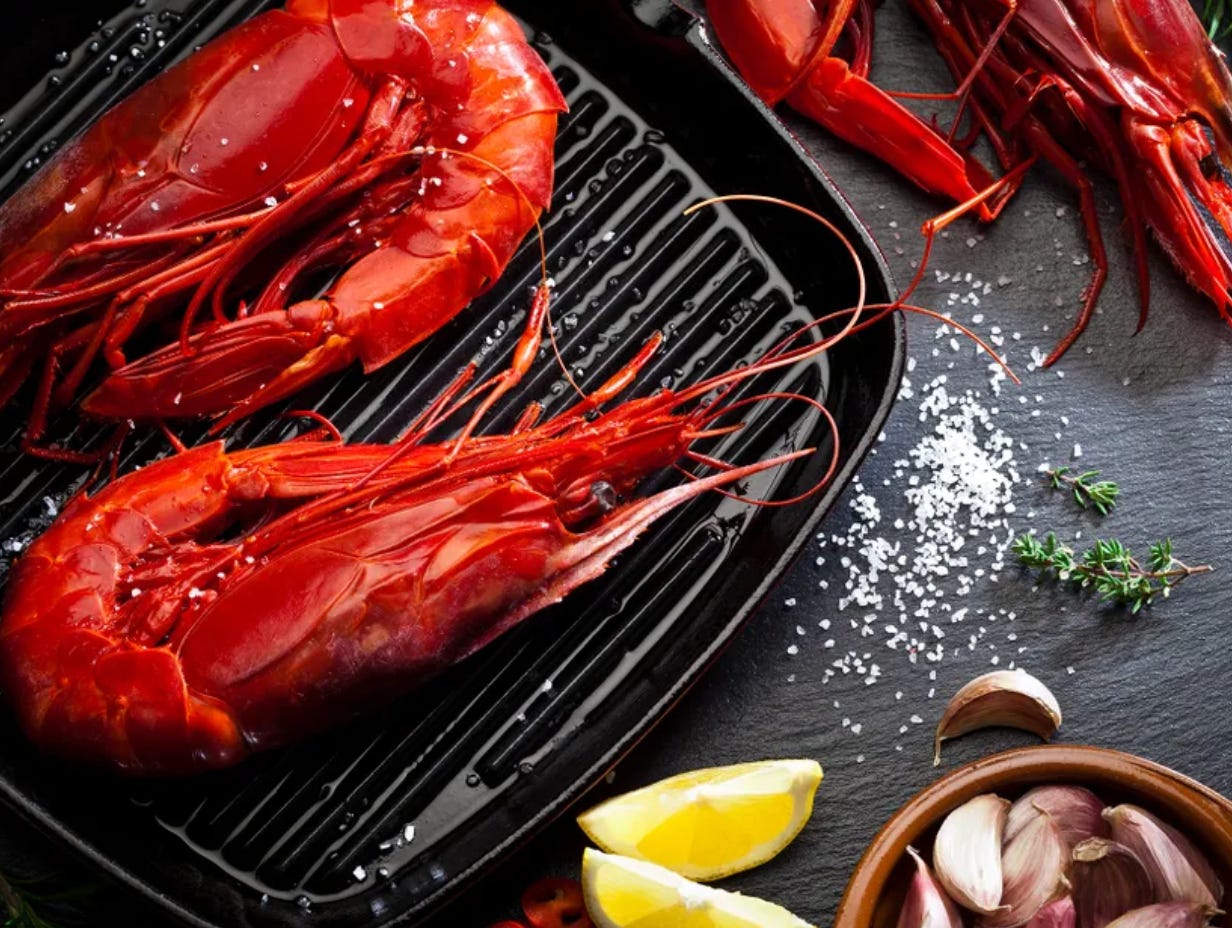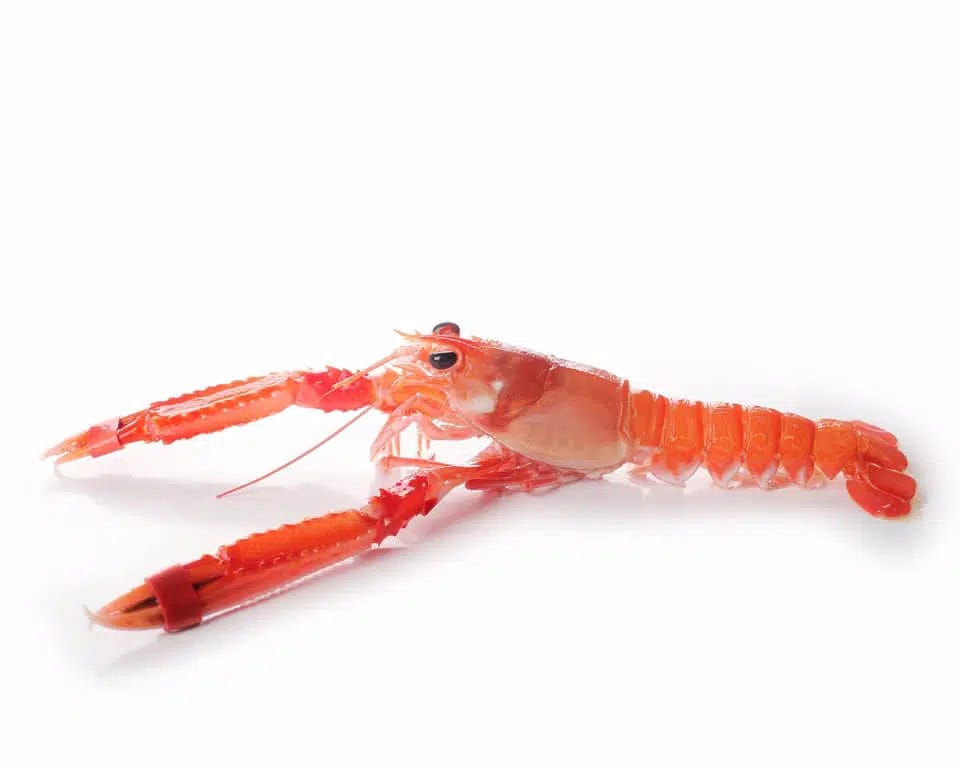Before I have time to move, the langoustine brain squirts; an arc of brown crustacean cerebral liquid flies through the air, and lands on my fresh, clean chef whites.
“That’s the brains. The tastiest bit,” says Marcos and laughs.
“Actually it’s not brains, just receptor cells,” he clarifies.
Well, that’s OK then.
I’ve reached Day 21 of the Chef Stage. My goal is 100 Days. One hundred days in Spanish Michelin restaurants learning from the best chefs in the world.
Today is a masterclass in sea food; crustaceans specifically as we prepare a box of cigalas, also known as Norway Lobster, Scottish Langoustine or Dublin Bay Prawn.
Chef Marcos shows me how to prep them:
1. First he twists off the head, avoiding the squirt of brains. As he twists, the intestine comes away, sometimes it’s transparent, more often it’s filled with black grit.
2. Next he turns the body onto its side. Using the heel of his hand, he presses gently downwards, until the shell cracks.
3. Finally, he peels off the the shell, in a spiral, revealing the white-pinky flesh of the cigala.
When I first came to live in Spain, I was amazed at all types of seafood you could find in the supermarkets. I still am.
The ocean plays a huge part in Spanish Cuisine.
Go to Alicante’s El Mercado Central and the shellfish counters are a stunning show of pinks and reds, of claws and beady eyes.
The Spanish word for ‘prawn’ is gamba - but asking for gambas is rather like going into Häagen-Dazs and asking for ice cream.
There are gambas of all sorts; gambas rojas and gambas blancas and gambones and at least one gamberra. ;-)
There are tiny quisquillas (above) and huge carabineros (below), and don’t get me started on the lobsters or the crabs, or we will be here forever more.
Most prized are the Gamba Roja and the Carabinero. These beauties will set you back minimum 50 euros a kilo, at Christmas double that.
And the best bit? Well, like Chef Marcos says, it’s the brains.
Too much?
It took me 10 years to get past the ugh. Ten wasted years. But once you try it you won’t look back. The intense, briny taste of the brains of the Gamba Roja are better than the fleshy body itself.
How to cook Gamba Rojas?
It’s so easy. Throw some sea salt onto a griddle pan, and when very hot, lay the prawns on their sides.
You’ll see the shell whiten, and the dark brains begin to bubble.
As soon as the liquid begins to seap out of the head, pull the prawns off the grill, they’re ready.
Now to eat them! Twist the head off, carefully, to keep the liquid inside, and suck.
I should mention that sucking prawn heads isn’t good for you.
Prawn heads contain a high level of cadmium, and according to Agencia Española de Seguridad Alimentaria y Nutrición (AESAN) consumption should be limited.
But tell that to the millions of Spanish at Christmas time.
The crustacean I am preparing today, the cigala (above) is not a prawn, it is a lobsterette.
On closer inspection you’ll spot the differences - there are two pincers, its shell is much, much harder and the flesh sweeter.
Cigalas grow to about 30cm in length, and the longer they are the more expensive.
I imagine the ones, we are preparing today, which are as long as my forearm, cost a small fortune.
We handle them far more gently than they handle us. The hard shell slices our fingers given half the chance, but the flesh is delicate and soft, and we must take care not to damage it.
When the intestine tract doesn’t come out easily, we use tweezers, operating like a surgeon; a quick incision under the gritty tube, and careful removal, to leave the tail intact.
Before long, we’re done.
The shells and heads are kept for stock and the delicate tails are laid out neatly on kitchen paper.
Unlike me they are clean, white and orderly.
I look down at my whites, streaked with crustacean brain, and sigh.
At least it’s the tastiest bit.
Comments are below. You need to be signed in to you account to leave a comment. Love to hear from you. 🙏 Nik











Lo mejor de las gambas la cabeza sin ninguna duda 😋